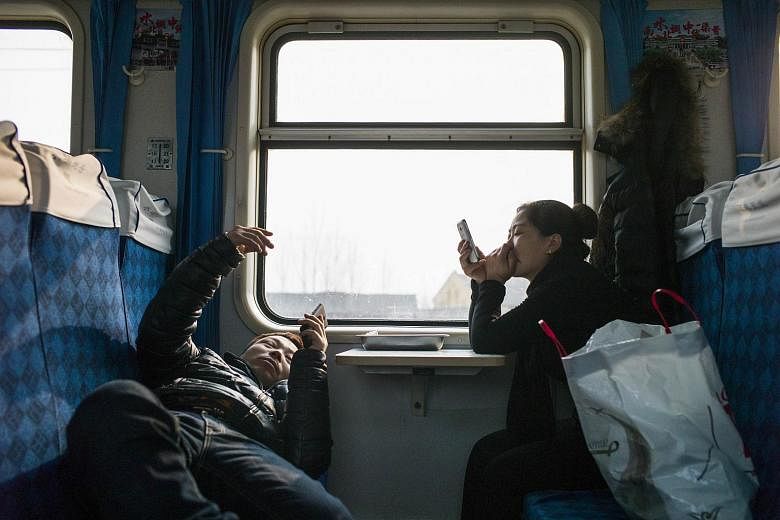In its editorial on March 9, the paper argues that the high-speed railroad between China and Taiwan - which Beijing has proposed for the second time - might happen, eventually.
China's National People's Congress (NPC) and the National Committee of the Chinese People's Political Consultative Conference (CPPCC) held their joint meeting in Beijing last Friday (March 4), where Mr Yu Zhengsheng, chairman of the CPPCC National Committee, proclaimed its 2016 working program, under which a high-speed railroad would be built across the Taiwan Strait to reach Taipei by the end of the 13th Five-Year Plan for National Economic and Social Development (13FYP) in 2020.
The NPC is China's parliament, and the CPPCC, its upper house. The 13FYP is the first five-year plan under Xi Jinping's leadership to reaffirm his policy vision and an articulation of China's vision for its future.
It isn't the first time that the inordinately ambitious bullet train service has been offered.
As a matter of fact, the plan for building the Beijing-Taipei high speed railroad was included in the 12th FYP while Hu Jintao was leader and general secretary of the Communist Party of China.
In response, President Ma Ying-jeou counter-offered to build a less ambitious bridge from Kinmen or Quemoy to Amoy, which is now called Xiamen in English.
Incidentally, the 13FYP includes a high-speed railroad to be built between Amoy and Quemoy, an offshore island under Taiwan's control.
Well, you can laugh both of them off as childish daydreams, if you will.
To the astonishment of almost everybody, however, our Ministry of Transportation (MOT) responded to Beijing's renewed offer in all seriousness.
The MOT suggested that the Mainland Affairs Council of the Executive Yuan communicate with the Chinese mainland side first so as to begin making a feasibility study for the Beijing-Taipei speed railroad plan.
"All kinds of feasibility studies can be made (together) so long as they concern engineering technique, albeit it's not going to be that easy," the MOT pointed out, adding "now that the future of the Quemoy-Amoy Bridge is uncertain, how to build the cross-strait high speed railroad will be much more difficult."
That's official gobbledygook, of course.
Everybody knows neither of the plans can be started before either Taiwan and China are unified as one country or the former is made a province of the People's Republic.
Neither is possible for any foreseeable future.
How can it be possible for the new government, the pro-independence Democratic Progressive Party ready to enter office on May 20, to agree to have either of the plans implemented?
The ultimate goal of the party is to create a new republic of Taiwan.
Then, what's the purpose of reiterating the Beijing-Taipei bullet train service?
For one thing, the reiteration is to force Tsai Ing-wen, the president-elect, to openly espouse the "1992 Consensus" in toto.
It's an unsigned modus vivendi under which both Taipei and Beijing are agreed that there is but one China whose connotations can be orally and separately enunciated.
The modus vivendi is made the legal basis for the peaceful development of cross-strait relations.
Known also as "One China with Different Interpretation," it is the sine qua non Beijing has laid down for the maintenance of Tsai's cross-strait status quo. She rejects it, and Mr Xi wants her to accept it in her inaugural speech.
Another purpose is to show Mr Xi's confidence of Chinese unification during his eight-year rule of China, which he began only three years ago.
He is convinced that Taiwan will submit before he steps down, even though Tsai may stall the peaceful development of relations between Taiwan and China. And his belief may be confirmed.
China has so far built the high speed railroad line from Beijing to Fuzhou envisaged in the previous FYPs.
What is left is the cross-strait line.
Technically, there are few problems to build it.
All it needs is Taipei's agreement to have it built.
No agreement is possible in the next four years, but the government may change again in 2020.
That government may agree.
* The China Post is a member of The Straits Times media partner Asia News Network, an alliance of 22 newspapers.

